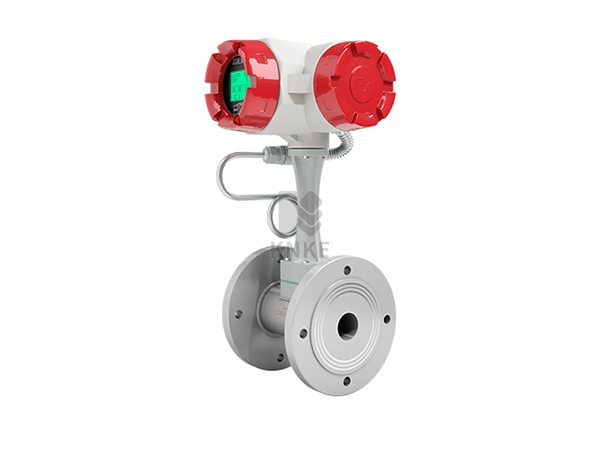vortex flowmeter
Vortex flowmeter
KNKE vortex flowmeter is a type of flowmeter that is used to measure the flow rate of liquids, gases, and steam in a pipe. It operates on the principle of the Karman vortex street, which is the phenomenon that occurs when a fluid flows past a bluff body, such as a cylinder or a sphere. The flow produces a series of vortices that alternate on either side of the body, creating a characteristic pattern in the wake of the body.
The parameters of KNKE vortex flowmeter that are commonly specified are:
- Flow rate range: The minimum and maximum flow rate that the flowmeter is capable of measuring accurately. This is typically specified in units of volume or mass per unit time, such as liters per minute or kilograms per hour.
- Pipe diameter range: The range of pipe diameters for which the flowmeter is designed. This is important because the performance of the flowmeter can be affected by the diameter of the pipe in which it is installed.
- Fluid type: Vortex flowmeters can be designed for measuring the flow of liquids, gases, or steam. The specific fluid type for which the flowmeter is designed can affect its performance, as the fluid properties can vary significantly.
- Accuracy: The accuracy of the flowmeter is typically specified as a percentage of the actual flow rate. This can vary depending on the manufacturer and the specific model of the flowmeter.
- Operating temperature range: The range of temperatures at which the flowmeter can operate reliably. This is important because the properties of the fluid being measured can change with temperature, which can affect the performance of the flowmeter.
- Operating pressure range: The range of pressures at which the flowmeter can operate reliably. This is important because the performance of the flowmeter can be affected by the pressure of the fluid being measured.
- Output signal: The flowmeter typically provides an electrical signal that can be used to measure the flow rate, such as a voltage or a current signal. The type of signal and the range of the signal are important parameters to consider when integrating the flowmeter into a larger measurement and control system.
- Repeatability: The ability of the flowmeter to produce consistent readings for the same flow conditions. This is typically specified as a percentage of the measured value.
- Installation requirements: The installation requirements for the flowmeter can vary depending on the specific model and the application. Some flowmeters require a straight pipe section upstream and downstream of the flowmeter to ensure accurate measurements, while others may have different installation requirements.
- Materials of construction: The materials used in the construction of the flowmeter are important to consider, especially if the fluid being measured is corrosive or abrasive. The materials of construction can also affect the range of temperatures and pressures at which the flowmeter can operate.
PREVIOUS:PeriodNEXT:Period
Categories
Contact Us
Contact: KNKE INDUSTRY
Tel: 001-303-3276
E-mail: knke@usaknke.com
Add: 1600 Broadway suite 1600 denver co80202 united states


